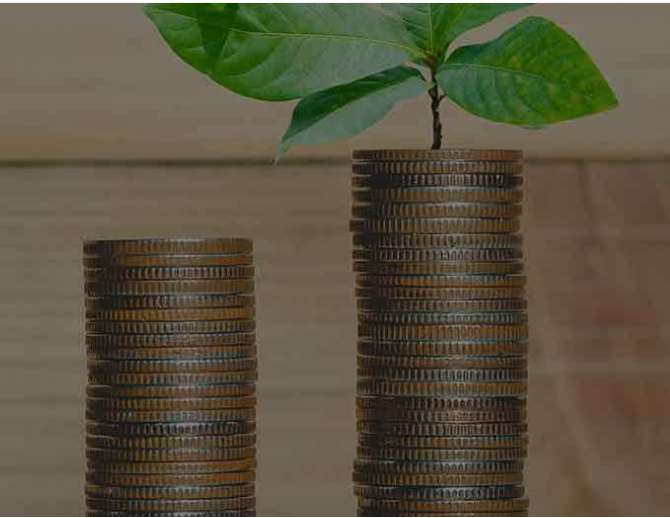Værdifulde metaller er blevet det store hit blandt investorer, især platin. Udbuddet kan ikke følge med efterspørgselen. Siden coronakrisens start er platin steget meget mere end guld. Det skyldes også, at platin bruges i produktionen af brint, der får en voksende betydning i den basale forsyning af grøn energi, samt i brændstofceller. I juli vedtog EU en strategi for brugen af brændstofceller i en “brint-økonomi”.
Uddrag fra Fidelity/PR Newswire:
WPIC: Platinum demand forecast rises as investors flock to precious metals
- Q2 2020 demand down 19% year-on-year but supply down by 35%
- Weaker supply and strong investment demand move 2020 forecast to -336 koz deficit
- Since the price lows of 19th March 2020, platinum has significantly outperformed gold
- Hydrogen economy elevates platinum as a precious metal with long-term store of value
While the COVID-19 pandemic negatively impacted the world economy on an unparalleled scale, investment demand for platinum strengthened in Q2 2020 as the combination of increased global risk and monetary and fiscal policy responses to the crisis boosted the appeal of precious metals, including platinum.
The latest edition of Platinum Quarterly from the World Platinum Investment Council (WPIC) reports a revised 2020 forecast that has moved the platinum market into an annual deficit of -336 koz compared to the prior estimate of a +247 koz surplus.
Total platinum supply in 2020 is now forecast to fall by 14% (-1,159 koz) to 7,102 koz and reflects a 15% (-910 koz) decline in refined production and a 12% (-250 koz) decline in recycling supply.
Total platinum demand in 2020 is forecast to be 7,438 koz, 11% (-948 koz) lower than in 2019 due to lower demand from all four demand segments: automotive (-464 koz), jewellery (-287 koz), industrial (-5 koz) and investment (-192 koz).
Investment demand is forecast to be 1,060 koz, 15% lower than in 2019 but 455 koz higher than previously forecast for the year. Indeed, heightened global risk is expected to continue to drive investor demand for hard assets, with bar and coin demand forecast to grow by 113% to 600 koz.
Heightened investor interest, which bodes well for the outlook for platinum, comes at a time when the latest WPIC Platinum Quarterly reveals details of the global impact on the platinum market during the peak of the Covid-19 crisis, a quarter that represented an unprecedented moment in history.
- Supply in the second quarter of 2020 fell by 35% year-on-year (-748 koz) to 1,408 koz. The second quarter bore the full supply impacts of a major smelting process outage and COVID-19 driven mining lockdowns in South Africa.
- Indeed, South African mines were completely locked down from 26th March to 30th April, and only widely reopened after 1st June. Platinum recycling in Q2 2020 was also severely impacted by COVID-19 related logistics disruptions, with volumes down 19% (-100 koz).
- Demand in Q2 2020 fell by only 19% year-on-year (-387 koz) to 1,599 koz, and was also only 2% (-36 koz) down on first quarter levels.? Platinum automotive demand in Q2 2020 fell by 48% (-360 koz) as COVID-19 related shutdowns limited vehicle production from early in the quarter in all major markets bar China.
- Pandemic-related factory closures, retail restrictions and consumer caution reduced jewellery demand by 27%, while all industrial demand segments except glass contracted. However, heightened global risk coupled with government monetary and fiscal policies to limit the global economic impact of the pandemic, increased demand for precious metals including platinum with platinum ETF net inflows of 122 koz in Q2 in sharp contrast to net outflows of -213 koz during the first quarter.
- Robust bar and coin demand continued in the second quarter, with 133 koz added to investor holdings. Additionally, strong inflows of platinum metal into NYMEX depositories, initially prompted by COVID-19 related logistics constraints, saw Q2 demand from the change in stocks held by exchanges of 138 koz.
An evolving global sea-change in the environment debate may also be at play in changing investor sentiment towards platinum, significantly bolstering platinum’s green and precious metal credentials.
Platinum’s role in unlocking the hydrogen economy heralds for it a robust basis as a long-term store of value. With the economic impact of COVID-19 depleting climate change funding, there has been growing impetus from China, Japan, South Korea the EU and the USA to prioritise the ‘hydrogen economy’ in cost-effectively driving forward the green agenda.
On 8 July 2020, the EU implemented its hydrogen strategy, highlighting the crucial role hydrogen will play in decarbonising industry, transport, power generation and buildings across Europe.
As increasing numbers of national governments recognise that the use of hydrogen as a fuel for primary power and transportation is one of the most cost-effective and sustainable routes to a better climate future, platinum’s key catalytic role to help facilitate the hydrogen economy is becoming known.
Not only is platinum key to the generation of green hydrogen, but it is also used in fuel cells for fuel cell electric vehicles (FCEVs). As the hydrogen economy and the FCEV market grow, it will create significant demand for platinum.
Signs of recovery by sector
- Jewellery – bounce-back in the USA:The easing of lockdowns in June triggered an impressive recovery, with US platinum jewellery imports being more than five times the size of those in May.
- Automotive – heavy duty resurgence in China:During Q2 2020, approximately 25% of heavy-duty vehicles (gross weight above 6t) produced were fitted with a China VI compliant emission control system. Consequently, automotive demand for platinum in China for the quarter increased by 62% (+31 koz) helping to somewhat offset the reduction in other automotive markets.
- Chemical – health and hygiene boost:Despite declining volumes in chemical applications overall, platinum demand was robust for COVID-19 related silicone products used in medical, health, hygiene and home care applications.
- Medical – pharmaceutical boost in India and China: The significant improvement in health care policy in China, and more expansive health insurance coverage in India, have seen dramatic increases in production of active pharmaceutical ingredients (APIs) in these countries. In the first half of 2020, India saw a marked increase in demand for platinum in pharmaceutical products compared to the prior year and in China, local pharmaceutical companies reported an increase in sale of APIs of between 10-20%.
- Glass – home working supports demand: Q2 2020 glass demand was up 15% (+11 koz) to 82 koz compared to prior year of 71 koz. Some of this was due to demand for monitor and laptop panels, boosted as working from home proliferated.










